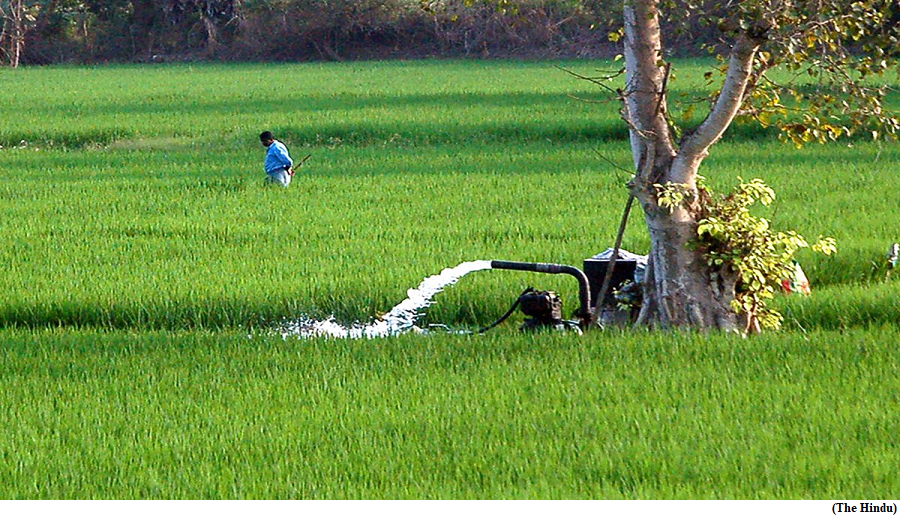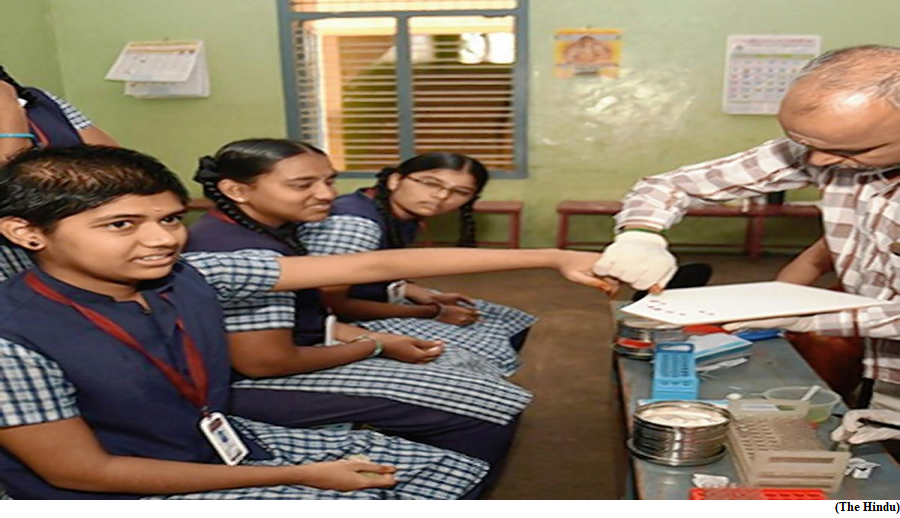Increased rainfall alone will not help groundwater recovery (GS Paper 3, Environment)

Context:
- The role of increased evapotranspiration due to warming climate, which will limit water availability for groundwater recovery.
Depletion of groundwater:
- Rapid depletion of groundwater in north India has become a norm during the last few decades. Between 2002 and 2022, about 95% of India’s groundwater depletion occurred in north India. Groundwater use and summer monsoon rainfall variability are the two main drivers of groundwater storage.
- Climate change can throw new challenges for the sustainability of groundwater due to increased groundwater pumping to meet irrigation demands for crops. Also, a warming climate will increase the frequency of hydroclimate extremes, floods and droughts.
- A less discussed aspect is the role of increased evapotranspiration due to warming climate, which will limit water availability for groundwater recovery. But its role will be less as increased groundwater use for irrigation will be the main driver of groundwater usage.
Recent study:
- A two-member team from IIT Gandhinagar used observational groundwater well data, and satellite observations from the Gravity Recovery and Climate Experiment (GRACE) and hydrological model simulations under future emission scenarios to understand the variability of groundwater storage under the warming climate.
- They found that the projected increase in summer monsoon due to climate change notwithstanding, recovery of the depleted groundwater in north India will be insufficient if there is continued use of groundwater at current levels for irrigation.
Key findings:
- They found that excessive pumping from non-renewable groundwater storage will aggravate groundwater loss.
- While most of the current observation wells are in the shallow aquifer, pumping of groundwater for irrigation in the Indo-Gangetic Plain is predominantly from deeper aquifers. So a warming climate may not have sufficient control over the overall groundwater storage variability in the region.
- The study provides two critical insights, the periods of high precipitation will help in partial recovery of groundwater even when groundwater extraction continues or even increases. However, the projected increase in precipitation may not directly translate to an overall increase in groundwater storage. The opposing influence of evapotranspiration will become dominant in the far period and at higher warming levels.
- As per climate projection, the summer monsoon rainfall is projected to increase by 6-8%, and this increase is expected to help recover the lost groundwater.
Efficient irrigation:
- The possibility of increased frequency of droughts cannot be ruled out. While the impact of droughts at longer frequencies may be less, consecutive years of drought can adversely affect groundwater storage as recharge will be less while extraction of groundwater for irrigation will be higher than when summer monsoon rainfall is normal.
- There can even be more challenging situations in future despite the projected increase in rainfall due to climate change. There is a compulsion to make irrigation more efficient and shift crop growing and procuring areas.
Way Forward:
- The focus should thus be to promote groundwater conservation to ensure long-term sustainability as it plays an important role especially during periods of drought. This applies even when increased rainfall can increase the recharge of groundwater.
Why is India rethinking its anaemia policy?
(GS Paper 2, Health)
Why in news?
- Questions related to anaemia are slated to be dropped from the National Family Health Survey (NFHS-6) scheduled to begin on July 6. The omission comes after health experts questioned the efficacy of the method being used to estimate haemoglobin levels.
- India’s anaemia burden has grown alarmingly with NFHS-5 (2019-21) finding that 57% of women in the age group 15-49 and 67% children between six months and 59 months are anaemic (from the corresponding 53% and 58.6% respectively in NFHS-4/2015-16).
- The Health Ministry has noted that anaemia is a public health challenge and accurate estimates are needed to tackle the crisis.

What causes anaemia?
- According to the World Health Organization (WHO), anaemia is a condition in which the number of red blood cells or the haemoglobin concentration within them is lower than normal.
- Haemoglobin is needed to carry oxygen and if there are too few red blood cells, or not enough haemoglobin, there will be a decreased capacity of the blood to carry oxygen to the body’s tissues, resulting in symptoms such as fatigue, weakness, dizziness and shortness of breath among others.
- Anaemia, may be caused by several factors. The most common nutritional cause of anaemia is iron deficiency.
- The assessment of anaemia in India is being shifted to the new Diet and Biomarkers Survey in India (DABS-I), launched in 2022 to map diet, nutrition and health status and provide the correct estimate of anaemia among the rural and urban population.
What prompted the change?
- Researchers had cautioned that there is a danger of anaemia being over-diagnosed in India as it follows WHO cut-offs for haemoglobin which may not be suited to India, because the cut-off point depends on the age, gender, physiological status, altitude and other factors.
- The WHO defines anaemia in children aged under five years and pregnant women as a haemoglobin concentration <110 g/L at sea level, and anaemia in non-pregnant women as a haemoglobin concentration <120 g/L.
- The study by the Indian team also pointed to differences in the way blood is drawn for sampling in NFHS.
- The NFHS survey measured haemoglobin in a drop of capillary blood that oozes from a finger prick. This can dilute the blood and give a falsely lower value. The recommended method of venous blood sampling gives a more accurate value.
Will a dietary survey help?
- The Health Ministry says DABS-I is a comprehensive national-level dietary survey, which will define food and nutrient adequacy by collecting individual dietary intake data of different age-groups of people from all States and UTs across the country.
- The study will also provide nutrient composition data on cooked and uncooked foods from various regions of the country for the first time.
- On the other hand, NHFS provides information on population, health, and nutrition for India and each State/UT.
- Besides providing evidence for the effectiveness of ongoing programmes, the data from NFHS helps in identifying the need for new programmes with an area specific focus.
Why the focus on anaemia?
- Data on anaemia remains an important indicator of public health since anaemia is related to morbidity and mortality in the population groups usually considered to be the most vulnerable — pregnant women and children under five.
- A prevalence study on anaemia is useful to monitor the progress of reproductive health. Also, iron-deficiency anaemia reduces the work capacity of individuals and entire populations, with serious consequences for the economy and national development.



